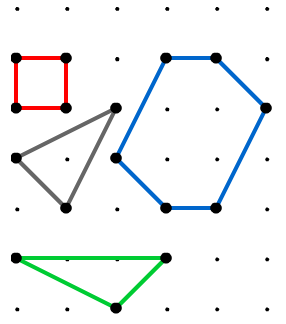
This fun two player game has a lot of strategies to consider …
The rules (from Wikipedia) are
Each line segment is coloured either red or blue. One player (usually the first, or left, player) is only allowed to cut blue line segments, while the other player (usually the second, or right, player) is only allowed to cut red line segments.
On their turn, a player “cuts” (erases) any line segment of their choice. Every line segment no longer connected to the ground by any path “falls” (i.e., gets erased). According to the normal play convention of combinatorial game theory, the first player who is unable to move loses.
Try it out here.
Can you create your own starting grids so that …
Player blue wins, regardless of if they go first or second
Player 1 wins, regardless of if they are red or blue
Player 2 wins, regardless of if they are red or blue
They might not all be possible!
Lots more to read here.
It is also interesting to analyse the “game value”, for example:

For some ideas on how to calculate the game value see this exploration.





